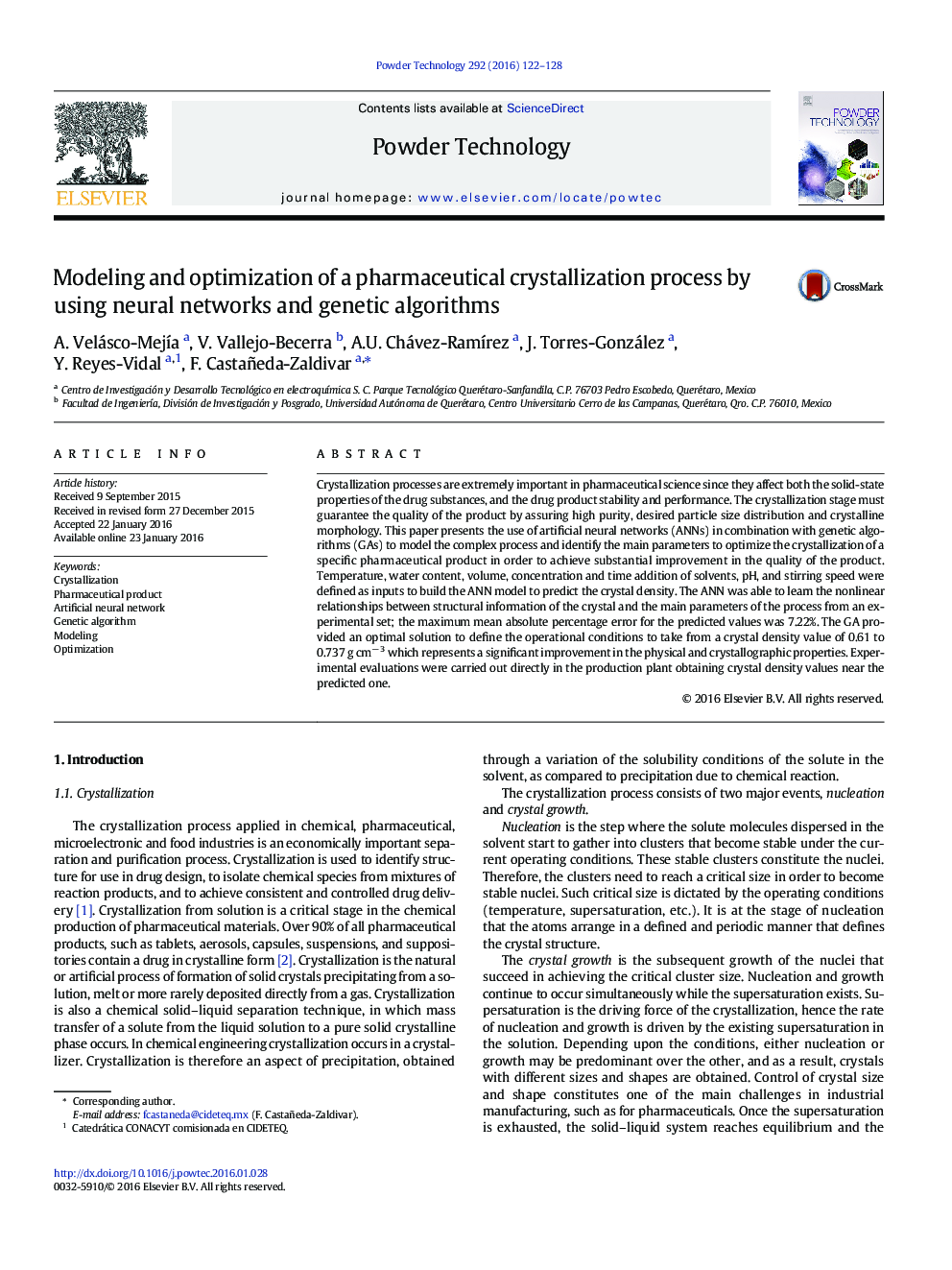| کد مقاله | کد نشریه | سال انتشار | مقاله انگلیسی | نسخه تمام متن |
|---|---|---|---|---|
| 235124 | 465629 | 2016 | 7 صفحه PDF | دانلود رایگان |
• The MLP-GA has been able to identify the most influencing variables of the crystallization process.
• Properties of pharmaceutical compound have been consistently improved by MLP-GA optimization.
• Big savings regarding processing time, raw material and efficiency increase due to optimization.
Crystallization processes are extremely important in pharmaceutical science since they affect both the solid-state properties of the drug substances, and the drug product stability and performance. The crystallization stage must guarantee the quality of the product by assuring high purity, desired particle size distribution and crystalline morphology. This paper presents the use of artificial neural networks (ANNs) in combination with genetic algorithms (GAs) to model the complex process and identify the main parameters to optimize the crystallization of a specific pharmaceutical product in order to achieve substantial improvement in the quality of the product. Temperature, water content, volume, concentration and time addition of solvents, pH, and stirring speed were defined as inputs to build the ANN model to predict the crystal density. The ANN was able to learn the nonlinear relationships between structural information of the crystal and the main parameters of the process from an experimental set; the maximum mean absolute percentage error for the predicted values was 7.22%. The GA provided an optimal solution to define the operational conditions to take from a crystal density value of 0.61 to 0.737 g cm− 3 which represents a significant improvement in the physical and crystallographic properties. Experimental evaluations were carried out directly in the production plant obtaining crystal density values near the predicted one.
Figure optionsDownload as PowerPoint slide
Journal: Powder Technology - Volume 292, May 2016, Pages 122–128
